Thought Leadership Studio Podcast Episodes:
Interview with Stephanie Scheller of Grow Disrupt
Episode 27 - Stephanie Sheller on Using the Violin to Teach Creativity in Business, ADHD and the Learning Entrepreneur, and More
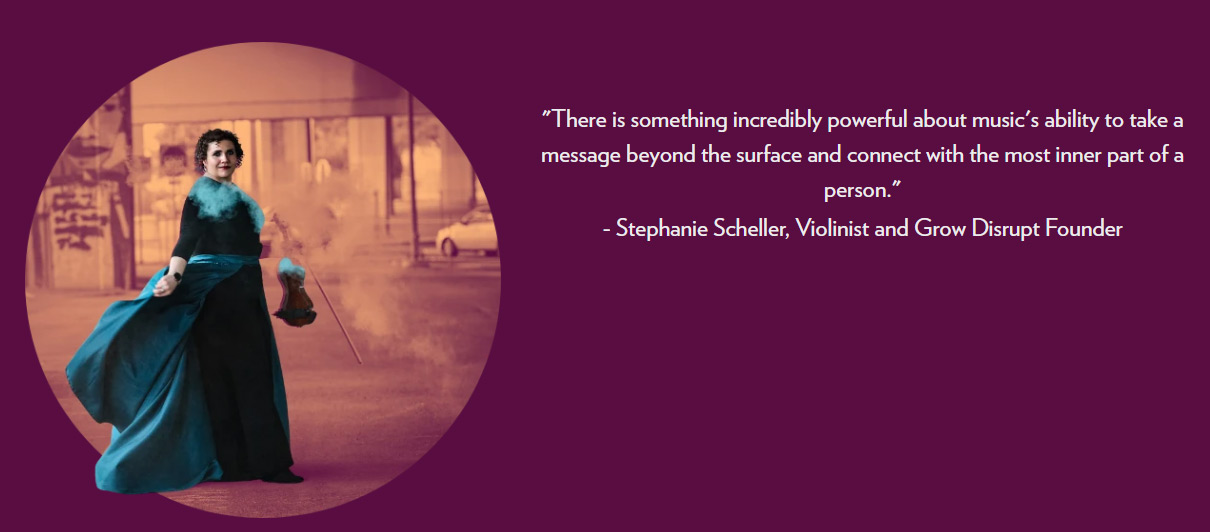
#adhd, #creativity, #entrepreneurship, #innovation, #interviews, #music
Or Click here to listen or subscribe on appWhat this episode will do for you
- Tap into more of your creativity.
- Gain insight from how Stephanie uses anchors to create positive states.
- Learn ways to use music to tap into creativity for business.
- Use ADHD as a superpower in entrepreneurship.
Stephanie Scheller of Grow Disrupt
Stephanie Scheller is the founder of Grow Disrupt, a company passionate about helping business owners thrive personally and professionally.
Check out their upcoming flagship event coming up in January 2023 at www.TheGrowRetreat.com.
Stephanie and her violin, Honey, speak at events on topics like creativity, sales & marketing, and bringing out the best in your people.
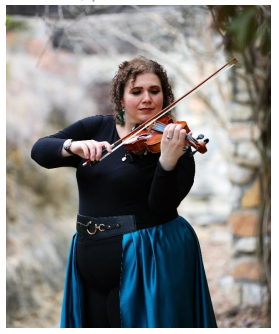
When you're leading your team, when you're marketing your business, when you're doing sales, why are we trying to leave emotion out of it?
Emotion makes all the difference. It connects in a way that nothing else does. So I started using it to drive home these points and that's really how I ended up bringing the violin.
-Stephanie Scheller, Violinist and Grow Disrupt Founder
Curated Transcript of Interview with Stephanie Scheller of Grow Disrupt.
The transcript is lightly edited for clarity and is a partial transcript- the full interview is on audio. Click here to listen.
Chris McNeil: I'm Chris McNeil, the host of Thought Leadership Studio and I am sitting here with Stephanie Scheller, a brilliant violinist who's also a TEDx speaker, two time bestselling author, award-winning entrepreneur, and the founder of Grow Disrupt, a company that designs and produces educational and application focused events to reinvigorate and inspire small business owners. And my understanding is Grow Disrupt focuses specifically on helping entrepreneurs with ADHD issues. Is that right Stephanie?
Stephanie Scheller: It does. It's kind of funny how we landed on that because, for a long time it was just application focused events. Like what we used to tell everyone is, "Hey, if you're like Stephanie" - like I just got tired of going to events and walking out feeling like I got no real content and I was overwhelmed, and like I didn't know what to do with it.
And so what we used to tell people, like, if you're like Stephanie, come to our events, you'll love them. And it was like last year that we started to realize, I think the common denominator is ADHD. And so we started doing all this research into everything we do at our events and realizing like all of these very conscious choices we've made for the past five, six, goodness, seven years now has been around these elements of ADHD that to me really are a superpower.
But they have to be supported properly. And when you do, you create some really cool stuff. And so that was when we were like, oh my goodness, we've, we've literally been building events for ADHD entrepreneurs. And so that was when our messaging shifted to, we design events for ADHD entrepreneurs..
Chris McNeil: And you know what? Isn't that (ADHD) most entrepreneurs? I'm way off the scale and I like being ADHD. I don't think it's a problem, but I put myself in a situation where I can utilize that.
Stephanie Scheller: Right. I think it's probably still a Venn diagram. There's still probably some entrepreneurs who are not ADHD, but I think it's probably pretty close to a circle. I think there's some elements, like being an entrepreneur requires you to be able to task switch with relative ease. It requires you to be able to see down the road, see multiple paths like project, figure out, plan. There's a lot of things about being ADHD that I think do lend themselves to entrepreneurship.
ADHD Entrepreneurs and Creativity
Chris McNeil: We talked about creativity a little bit before the show. And of course, you're a musician and utilize music as part of how you teach creativity, as I understand. Which I think is awesome. Do you see a relationship between ADHD and creativity?
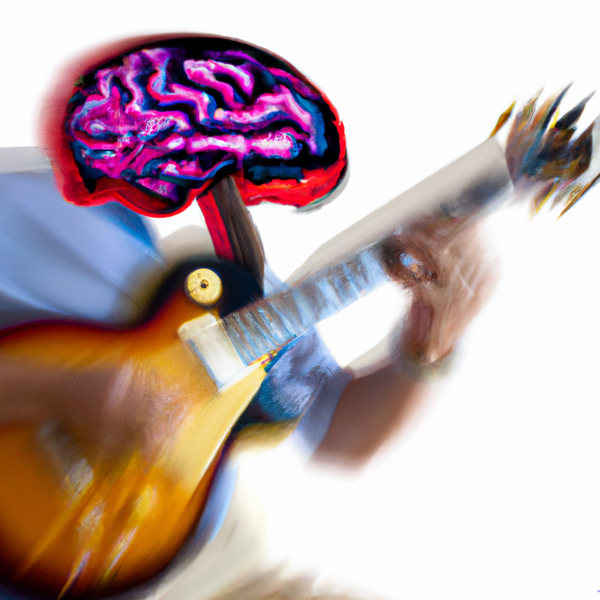 Stephanie Scheller: I haven't looked into this to see if there's like a study out there that's tied to the two together, but I feel like the way my brain functions and can kind of, one, see 40 things and start kind of drawing connections between them and see all these different paths to go and play out these different scenarios ... I feel like that helps me be more creative because it brings more perspectives, which is part of creativity.
Stephanie Scheller: I haven't looked into this to see if there's like a study out there that's tied to the two together, but I feel like the way my brain functions and can kind of, one, see 40 things and start kind of drawing connections between them and see all these different paths to go and play out these different scenarios ... I feel like that helps me be more creative because it brings more perspectives, which is part of creativity.
Creativity is like, if you come down to it, there's not much new under the sun of the, you know? I think that's the way the saying goes. Creativity is finding a new way to approach it, a new way to tackle it, a new way to go about making that happen.
So I personally think there probably is a pretty high correlation. It would be kind of a fun story to study: Like, how many great artists and musicians and people who have super creative worlds have ADHD? And now I'm really curious to go look and see if there's a study that ties the two.
Chris McNeil: Well, you know, I was not officially diagnosed until I was in my fifties.
Stephanie Scheller: Oh, seriously?
Are You an Entrepreneur with ADHD?
Chris McNeil: Yeah. And my whole life I was wondering why I can't stand to sit in a classroom for an hour and listen to somebody talk and draw things on a chalkboard. That's not how I learned. I learned very rapidly, but not that way. And it connected some dots for me...
But I'm thinking about the listener and chances are a lot of our listeners have ADHD -which is a superpower of course -just framing it correctly to utilize it as such, perhaps. And you'll be able to talk a lot about that.
But you can also speak to another common denominator amongst thought leaders and entrepreneurs. Because to me, Strategic Thought Leadership requires creativity. Because if you're going to lead thinking - initially your own, and then others - to somewhere new, that implies inventing that somewhere new.
But say for the listener who might be wondering, "Hmm, am I ADHD?" Let me put down three of the books that I'm reading as I also listen to this podcast and several songs on four radios in the room and assess that for myself. How would someone know if they are?
Stephanie Scheller: Well, I mean, so technically the really the best way would be to get a diagnosis. Like go to a therapist, go to someone. There are centers, but that is what they do. They do tests and diagnoses.
A lot of times they're doing them on children. So one thing that would be important to check with is like, do you have experience with diagnosing adults? Because adult ADHD, especially people like you and I.
I mean, I was mid twenties before I was diagnosed, so like I spent my whole life doing the same thing. Like, I don't like this about myself and I'm gonna try and fit into a box. And all of a sudden it was like, wait, hold up the box does not have to be my life.
Chris McNeil: Thank God. Yeah.
Stephanie Scheller: Right. So like that would be, that would be the technical answer is go, if you're, if you think you might be ADHD, go talk to, to go talk to someone who can do a, a, a professional diagnosis. But on the other side, what I would encourage is if you do think you are ADHD start doing some research into what that looks like in adults. And start to look at how many of those same things do you deal with.
More importantly, if you're starting to reach a point where you're like, I think I may be an informal diagnosis. Right? I'm pretty sure I got, I got eight of the 10 symptoms I've just read about. Pretty sure this is me. Start looking at how those symptoms can become. Because for me, I had my diagnosis, you know, mid twenties, but I didn't really do anything with it until like two or three years later when I started to realize how all these different pieces of who I am are very common for ADHD individuals.
Chris McNeil: I'm not trying to diagnose our listeners, of course, as you go to professional for that, but just to have some common ground to speak of these - and maybe we can call them characteristics instead of symptoms, and frame them that way.
Stephanie Scheller: There we go.
Chris McNeil: ...What are some of the key ones that would make someone ...
Stephanie Scheller: For, um, for me, a lot of times, um, my brain is functioning probably three or four sentences ahead of, so my, my brain is filling in the gaps. What is this person gonna say? What the direction are they trying to go? I'm trying to, I'm trying to, um, and then I don't know if this is so much ADHD.
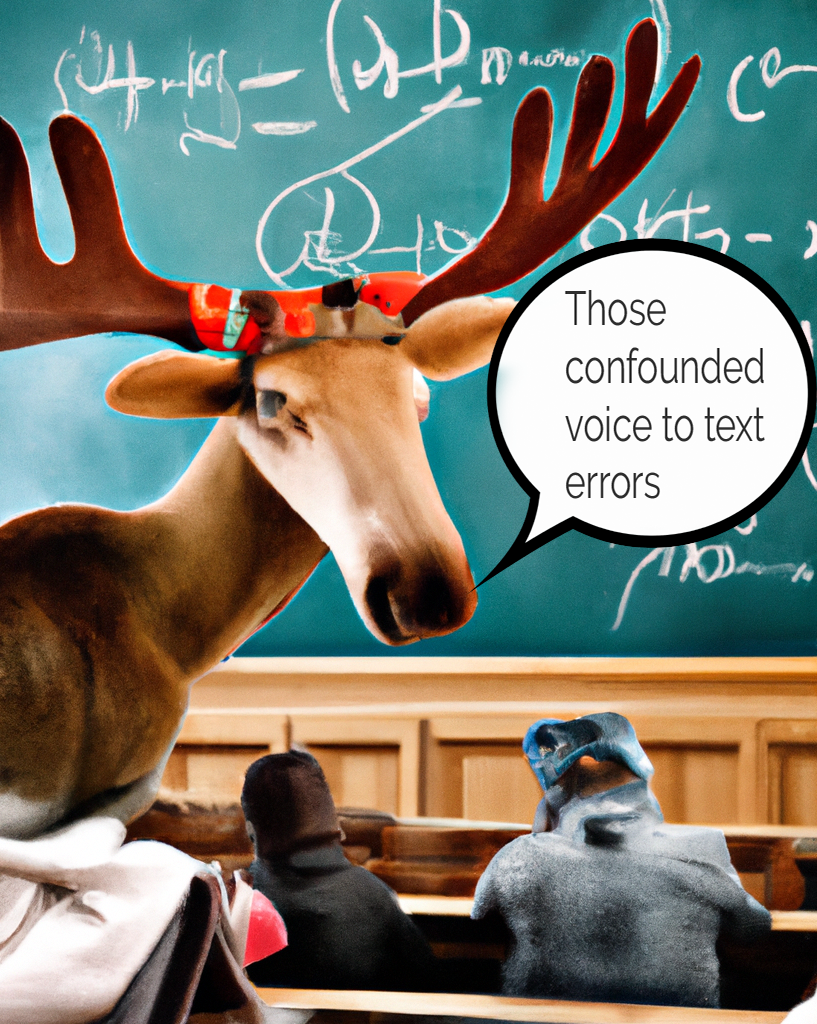 My brain is trying to think in patterns and so it's trying to predict patterns constantly. And a lot of times it's really good at that. And so it can get bored really easily when I've predicted a pattern and it's like, oh, well, like now I'm bored because it's gonna take them five minutes to get to the point that I already figured out . I think's a really common one.
My brain is trying to think in patterns and so it's trying to predict patterns constantly. And a lot of times it's really good at that. And so it can get bored really easily when I've predicted a pattern and it's like, oh, well, like now I'm bored because it's gonna take them five minutes to get to the point that I already figured out . I think's a really common one.
The best way to explain it would be like finishing someone's sentences. We've all learned not to do that in, you know, all the time in person. That would just make everyone mad...
Chris McNeil: Your brain races to the end like I'm doing just as a smart elk example right now.
ADHD as Superpower for Entrepreneurs
Stephanie Scheller: Right. But exactly. So I think that is an extremely common one, which does translate into a hard time sitting still - a hard because you're bored. Another one that I've seen really common - again, one of mine - is I do see like 10, 15 different paths. I'm like, I'm standing here. This decision I make could take me down this direction and it could go one of these five paths and if I make this decision, it could go here and it could take me these if I make this decision.
And that is also really common for individuals with ADHD, is to be able to see a bunch of different paths and like, which one do I take? What's the best one to be able to, to go down? And again, I think that's one that is a superpower for entrepreneurs, right? We can sit here and be like, okay, I can kind of start to plot out where I need to go for my business
Chris McNeil: Is that the equivalent of what I've heard called stacking order? Like how many books somebody has open at a given time?
Stephanie Scheller: I think there's probably some connection there. I don't know if it is the exact same, but I do think there is something where we can process things from multiple directions. We're not linear.
Chris McNeil: Right. And isn't that a superpower though? And is it, you know, this is a discussion I've had with myself, and one of the times I'm trying to finish my own thoughts before wrap my own thinking pattern with something different: Isn't a lot of traditional education still industrial revolution Carnegie "train them to work in my factory but not be so smart as to want to own the factory to compete with me."
A kind of education that was invented at the beginning of the industrial revolution.... And the whole concept of ADHD in a sense might be just the lack of (traditional education's) ability to expand to different learning styles, different thinking styles that might be better accommodated by things like what you're doing?
Stephanie Scheller: Yeah. I could, I could see that. And I think, I think the challenge would be there that some people are gonna learn better one way and not be able to adapt. Right? So I may learn a little differently than, than someone else with ADHD, but understanding what my learning style is versus what your learning style is versus, I do think we do tend to do well with a short instruction period and then an application period.
Like, let me do what you're talking about. Oh, that's interesting. Okay. As opposed to let me read a book and get, you know, an entire textbook's worth of data and then try the implementation. And I think part of that comes back to our brains trying to fill in the gap.
Let me give up a little bit and let me see if I've kind of figured out my plan from here. Um, so that's...
Grow Disrupt
Chris McNeil: So you're just leading me to envision. How is it that you incorporate this in Grow Disrupt and how does that make for a different experience?
Stephanie Scheller: So there is a lot of difference. One of the biggest things that, to talk like all of the stuff we've been talking about... One is how our events are structured. So our events are always structured.
Day one is kind of a rapid fire series of ideas. We call it ideation day. So it's like, here's one idea and then here's another idea and here, and it's a whole bunch of ideas with some information presented. So you can start filling in the gaps.
And then day two is application day where you're actually in a workshop applying what you just learned and doing what we just talked about as opposed to sitting there taking notes. Like you're going and saying, okay, I'm gonna, this is the vendor I'm gonna call to negotiate with and this is what I'm gonna say to them and I'm gonna write out my script.
So when I walk out of this room, all I have to do is make that call and make that negotiation like I'm wanting to do. So that's really big. The other thing I do is I'll do a lot of, of conversations with our speakers ahead of time and just let them know like, this is how our audience processes information. So whereas you might wanna do a seven minute story that leads to a three minute point, what I need you to do is give me the point, give me a three to five minute story and then let's keep moving. Like they wanna fill in the gap, they wanna listen to the story as a way to fill in the holes because they've already gotten to the conclusion.
And so, I work with the speakers to help them restructure how they're presenting information, um, in a way that makes sense for the audience.
Chris McNeil: And so what's the takeaway for the audience that's distinct for this style of teaching?
Stephanie Scheller: The takeaway is typically getting them into action as quickly as possible. Basically. Like, let me give you the point and then let's go. Like, let's actually do something with this. Let's not get stuck in learning. Because with every superpower comes your potential problem. You know, Superman could squash the world or whatever.
And that's our challenge with being able to see all these different directions and I can see all these different ways that I'm going to ... now I can't decide which one to go on because I can see 40 different directions to go. And so our goal is to get them past that point, like glance at it, make a decision to move in that direction because we don't want to get, we don't want you to get stuck in indecision and feeling overwhelmed because there's 40 different potential paths to take here.
Chris McNeil: So you help ADHD entrepreneurs be more productive, and maybe get away from feeling like they're always trying to fit to their round peg into a square hole world.
Stephanie Scheller: Yeah. And help them eliminate the overwhelm as much as possible. You are never gonna do that entirely, but eliminate a lot of the overwhelm, so that they can. The end goals is higher productivity.
Incorporating Music in Teaching Creativity in Business
Chris McNeil: Well that's cool. Now, you also are a musician and you incorporate music in how you teach creativity. Tell me about when you were inspired to do that ... when you were inspired to incorporate music in a teaching creativity. What triggered that?
Stephanie Scheller: So the funniest thing is I've my done music for a long time. My mom had us take piano lessons as a kid and then in high school I picked up the violin and I still say like, I'm just so grateful my mom suffered through that basically .
Because I even tried playing my old violin a couple times and I'm like, oh my God, even I can't make this sound good . So I played it through high school a little bit and then I picked it up again in 2019 specifically because it was an evening.
I was feeling very drained. I was exhausted and I realized I didn't have a hobby beyond work. Like everything in my life was related to work and I wanted something that went beyond it. So I picked up the violin. I usually I'll paint, so I know listeners can't see me, but behind me I have a bunch of paintings. These are all ones that I've done. Like I paint as well.
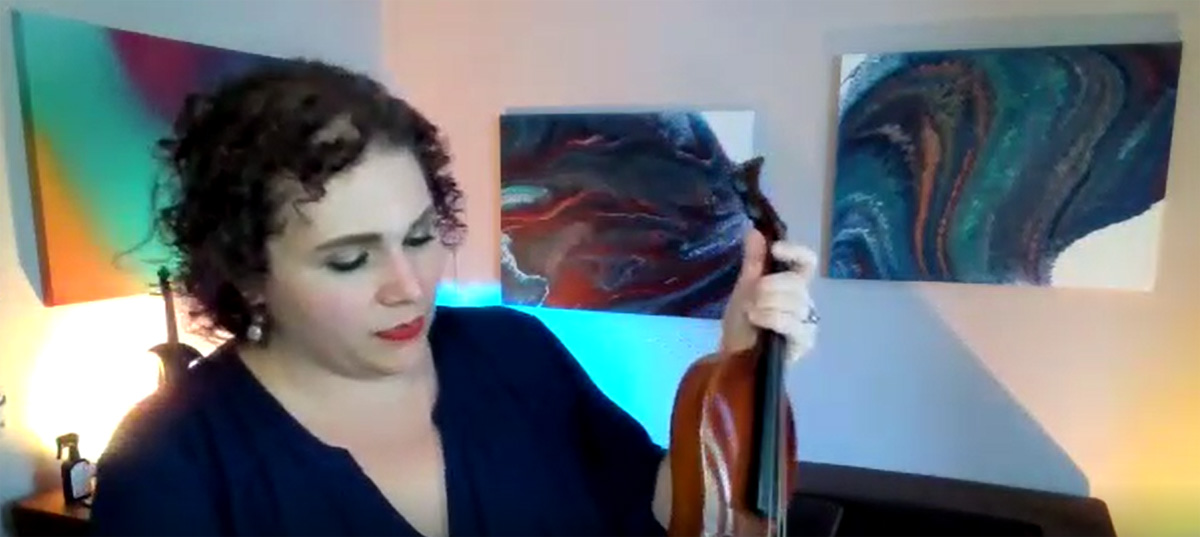 Chris McNeil: I was going to ask you because they're beautiful.
Chris McNeil: I was going to ask you because they're beautiful.
Stephanie Scheller: Thank you.
Chris McNeil: For those of you who can't see this and are just listening, they're stunning
Stephanie Scheller: . Well, thank you. I truly do love doing paintings. These two are in sister paintings. They flow together as you can see. But my issue is when I go paint, it'll be an hour to two hours. Like I want to get lost in the painting and I just didn't have time. It was like 9:00 at night, I had to be up at 4:00 AM the next morning. I didn't have time to go do that.
So I went and I just grabbed the violin and I started playing and it turned into this ... the best way I've been able to describe it is the violin sits on your collarbone. Right. And it was like, it just drew this thorn, like the vibrations just drew this thorn out of me. It just gave me a space to let all of that frustration and negative energy just pull out and go away.
And it was a really incredible moment. So I started playing more consistently and at one point, I saw a video of someone using the violin on stage for speaking, for keynote speaking. And I was like, oh, that's cool. Um, and then I had ...
 Chris McNeil: That's so much better if you're not a pipe organ player.
Chris McNeil: That's so much better if you're not a pipe organ player.
Stephanie Scheller: I know I can bring ... Would you, would you play the cello? I'm like, you can't really transport the cello. I know like the pipe organ would be the same issue. Like, what are you gonna do? Show up with like a church on your back?
Chris McNeil: Like, so, you were on attracted to using it on stage as part of ...
Stephanie Scheller: Yeah. So I saw this guy doing that and I started to think, I wonder if I could do the same thing. And, and what it just turned into was, um, I started to ask myself, so how would I make it not just a prop, right? Like, can I walk on stage and just have the violin?
But how do I make this actually drive home a point? So I started incorporating it into some of my trainings and I would use it to talk about like - what's the difference between listening to a piece of music played, just note for note exactly how it's written or a piece of music with emotion? Like, which one sounds better?
And of course the audience is always like, oh, the second one sounds better, Stephanie. I'm like, right. So when you're leading your team, when you're marketing your business, when you're doing sales, why are we trying to leave emotion out of it? Emotion makes all the difference. It connects in a way that nothing else does. So I started using it to drive home these points and that's really how I ended up bringing the violin.
And now I do use it and I'll, I'll talk about like, um, getting on stage and the power of creativity in business and having space to get creative to just let that creativity Whoa. Cuz otherwise it will just get lost.
Chris McNeil: So I'm getting from this, if I could regurgitate a little bit, that part of it is music as an instrument of conveying emotion, of conveying consciousness, nonverbally.
Stephanie Scheller: Right.
Chris McNeil: So it's like "here's enthusiasm" without even needing the word...
Music, States, and the Group Mind
Stephanie Scheller: It cuts out this piece of our brain that emotions have to go through to translate into language. And that is Wernicke's Area. And what happens is we lose a lot. Like it doesn't speak emotion very well. It doesn't, it actually doesn't speak whatever your language is. Wernicke's Area really actually doesn't speak it very well at all. Like it kind of tries to take the, the quickest path. So it's like she was angry, but that doesn't really communicate. No. She was furious, spitting mad to the point where you thought that her face was going to explode.
She was no longer breathing. That's not how your brain thinks. Right. You have to like process into communicating that emotion. And so it allows me to tap into that emotional side of the brain without having to translate it through Wernicke's Area.
Chris McNeil: Well I read somewhere that the kinesthetic and auditory cortexes overlap 40%
Stephanie Scheller: Oh, I hadn't heard that.
Chris McNeil: Sound and feeling are very closely related. And aren't the two natural fears loud noises and falling - auditory and kinesthetic? So I mean, we're just so wired to morph from feeling to sound that way. And I think, so music being organized sound.
And the best musicians to me are the ones who no matter what, it's not so much your technical skill... I am attracted to music that demonstrates a lot of technical skills. We aspire technical skills to musicians, but it's about how you take that palette and the way you use it to directly transfer emotion, transfer feeling.
Have you ever been to a concert like, (I used to be a deadhead back in the day) where the relationship with the audience is, in a sense, a group trance almost in how large group of people could be immersed in the same feeling together through that experience?
Stephanie Scheller: So there's actually a whole study about how music does stimulate specific brainwave patterns. And so you can use music to put yourself into creative or focus. And so what happens is when you have a whole group of people listening to music at the same time, your brainwaves start to line up. Like it's really, really cool stuff.
I think that's why, you know, when I use the violin on stage, I'm almost always one of the most memorable speakers. People who come to me a year later say, "Oh my god, I remember you". And I'm like, "cool" .
Chris McNeil: It's giving a powerful anchor in the music. I mean, Why does every brand want to have a sound that's synonymous with opening their app or something that becomes, and like the Netflix "Baboom", you know?
Stephanie Scheller: Right.
Chris McNeil: ... or MGM's lion roaring, you know ... the sounds.
Stephanie Scheller: I'm working on a whole article right now about sensory triggers and what they do for ADHD individuals and how they can put you in these spaces. And I'm having a lot of fun with it. It's part of a series of articles on how ADHD is your superpower .
But this is one where I'm like, I feel like sensory triggers the, the smell. Like I have a specific oil that goes on my wrists before I get on the podcast, before I go on stage, before I ..., because this puts me in that performance space. I have specific scents I use when I'm doing creative brainstorming and I'm doing writing when I'm doing focused work. Like there's certain things that I do. I have a spray that I spritz in the room if I'm finding myself getting too distracted because it helps me refocus. Sensory engagement: taste, touch, smell, um, hearing ... all of these, the power it has is ridiculous.
Chris McNeil: Well, that's interesting. So you actually use scent as an anchor, which I think is really powerful. Isn't the olfactory sense, the only one that actually has a direct connection to your brain?
Stephanie Scheller: Yes.
Chris McNeil: Everything else is pre-processed, you know, and your brain we're not really seeing things as they are, we're seeing things the way our brain conveys (information to our minds ... and reinterprets)
.............
The transcript is lightly edited for clarity and is a partial transcript- the full interview is on audio. Click here to listen.
***************************************
Free Stuff and Offers Mentioned in Podcast
***************************************